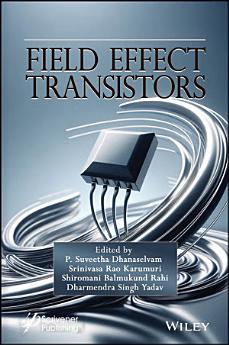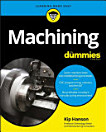Field Effect Transistors
આ ઇ-પુસ્તક વિશે
Miniaturization has become the slogan of the electronics industry. Field Effect Transistors serves as a short encyclopedia for young minds looking for solutions in the miniaturization of semiconductor devices. It explores the characteristics, novel materials used, modifications in device structure, and advancements in model FET devices. Though many devices following Moore’s Law have been proposed and designed, a complete history of the existing and proposed semiconductor devices is not available. This book focuses on developments and research in emerging semiconductor FET devices and their applications, providing unique coverage of topics covering recent advancements and novel concepts in the field of miniaturized semiconductor devices. Field Effect Transistors is an easy-to-understand guide, making it excellent for those who are new to the subject, giving insight and analysis of recent developments and developed semiconductor device structures along with their applications.
લેખક વિશે
P. Suveetha Dhanaselvam, PhD, is a professor in the Department of Electronics and Communication at Velammal College of Engineering and Technology, Madurai, India, with over 21 years of teaching experience. She has published papers in over 28 reputed journals and 65 international conferences, as well as two books, numerous book chapters, and a patent. Additionally, she serves as a reviewer for several journals and works on funded projects. She has produced two Doctorates and five are pursuing their PhD under her guidance.
Srinivasa Rao Karumuri, PhD, is a professor and the head of the VLSI-MEMS Research Center, Department of Electronics and Communication Engineering at the Koneru Lakshmaiah Education Foundation(Deemed to be University), Guntur, Andhra Pradesh, India. He also acts as a reviewer for several IEEE Transactions Journals and universities’ graduate and post-graduate programs and is working on a project for the Indian government’s Science and Engineering Board. Additionally, he has published over 250 international research publications and presented over 65 international conference papers and guided more than 10 PhD Scholars in the field of VLSI and Microelectronics domain.
Shiromani Balmukund Rahi, PhD, is an assistant professor at University School of Information and Communication Technology (SoICT) Gautam Buddha University Greater Noida, Uttar Pradesh, India. He has successfully published 25 international research publications, four conference proceedings and 35 book chapters, in addition to presenting his research at various international conferences and workshops. In addition to his original work, he has edited 10 books and received awards for his work as an editor and reviewer for several international journals. He has also worked as post-doctoral researcher in Korea Military Academy Seoul, Republic of Korea.
Dharmendra Singh Yadav, PhD, is an assistant professor in the Department of Electronics and Communication Engineering at the National Institute of Technology, Kurukshetra, Haryana, India. He has published over 60 publications internationally in addition to several reputable books and book chapters. His current research interests include very large scale integration design, device modeling, and AI and machine learning in semiconductor devices and circuit-based applications in research.




